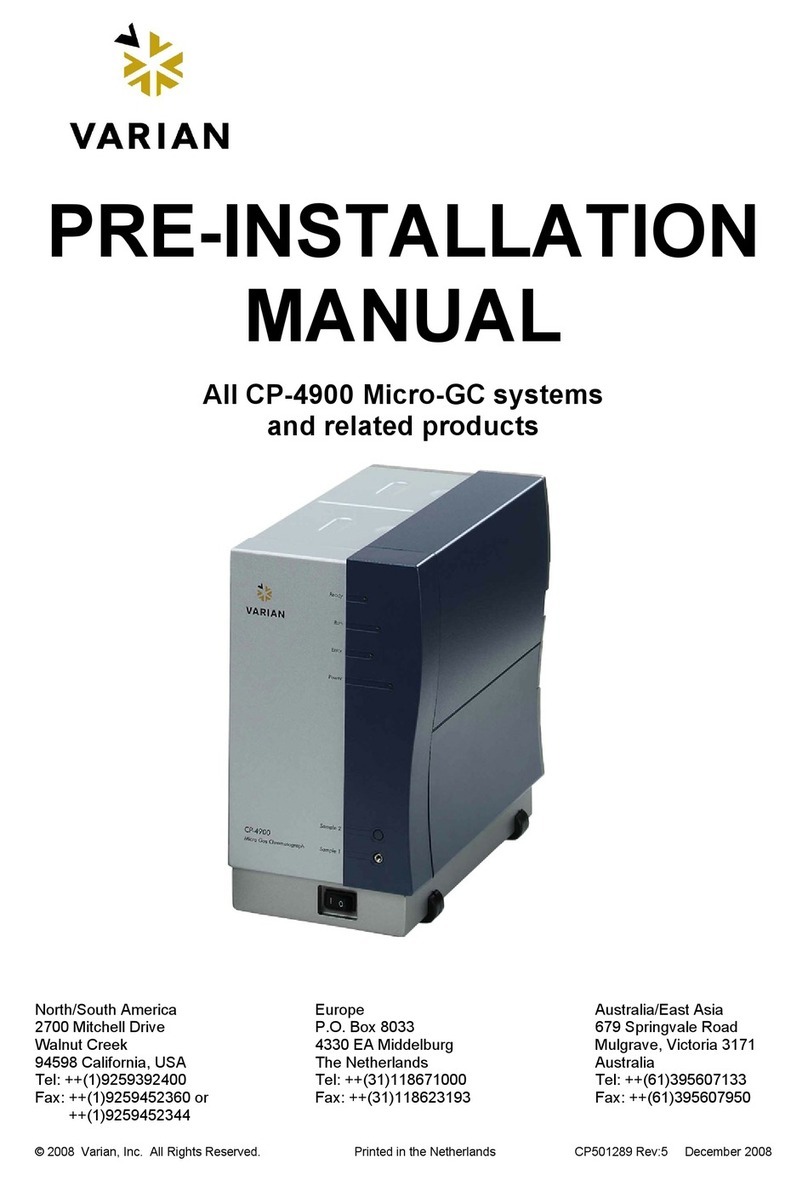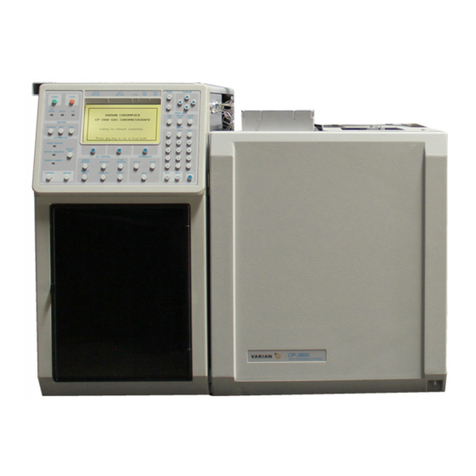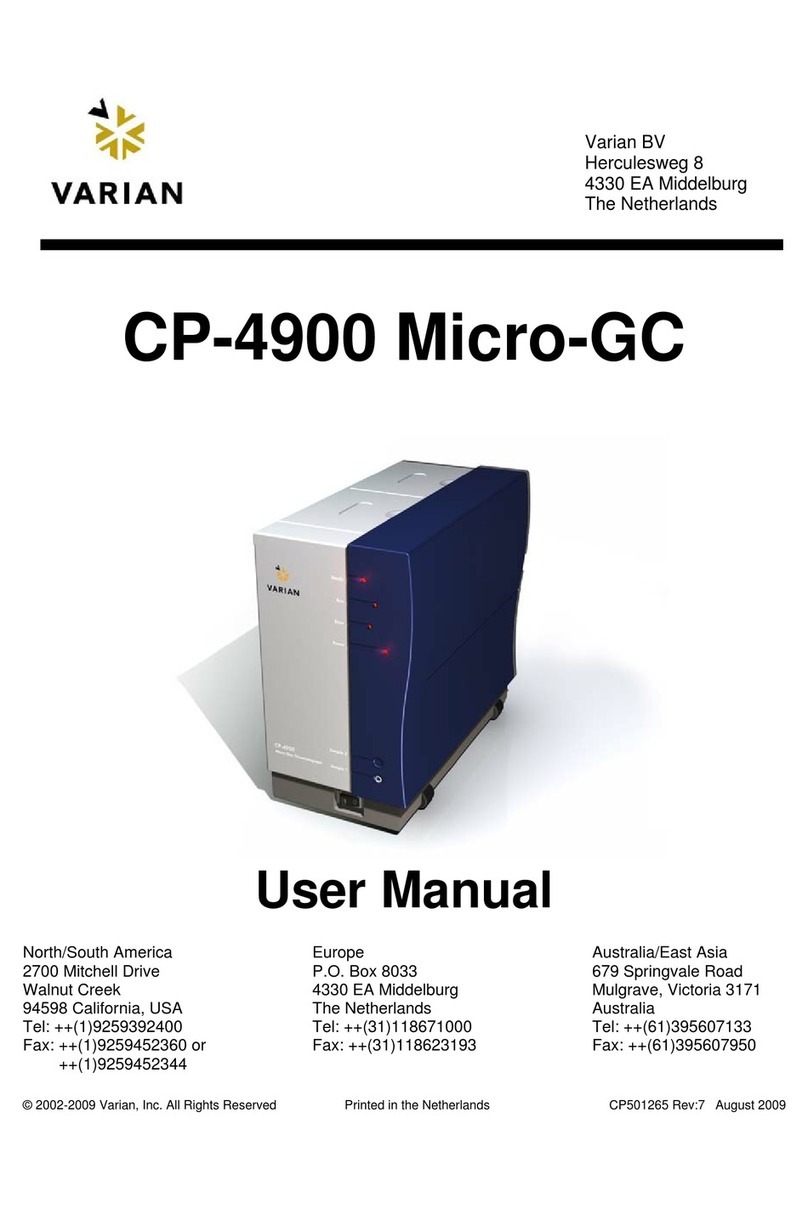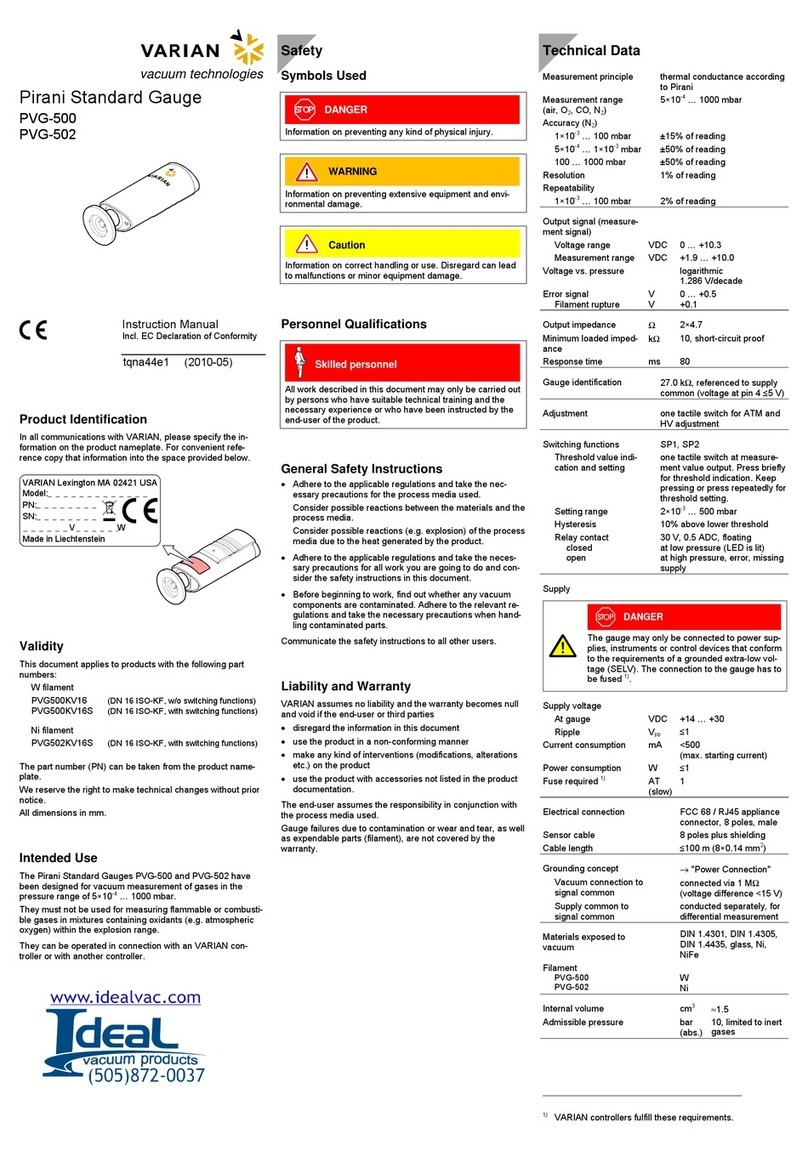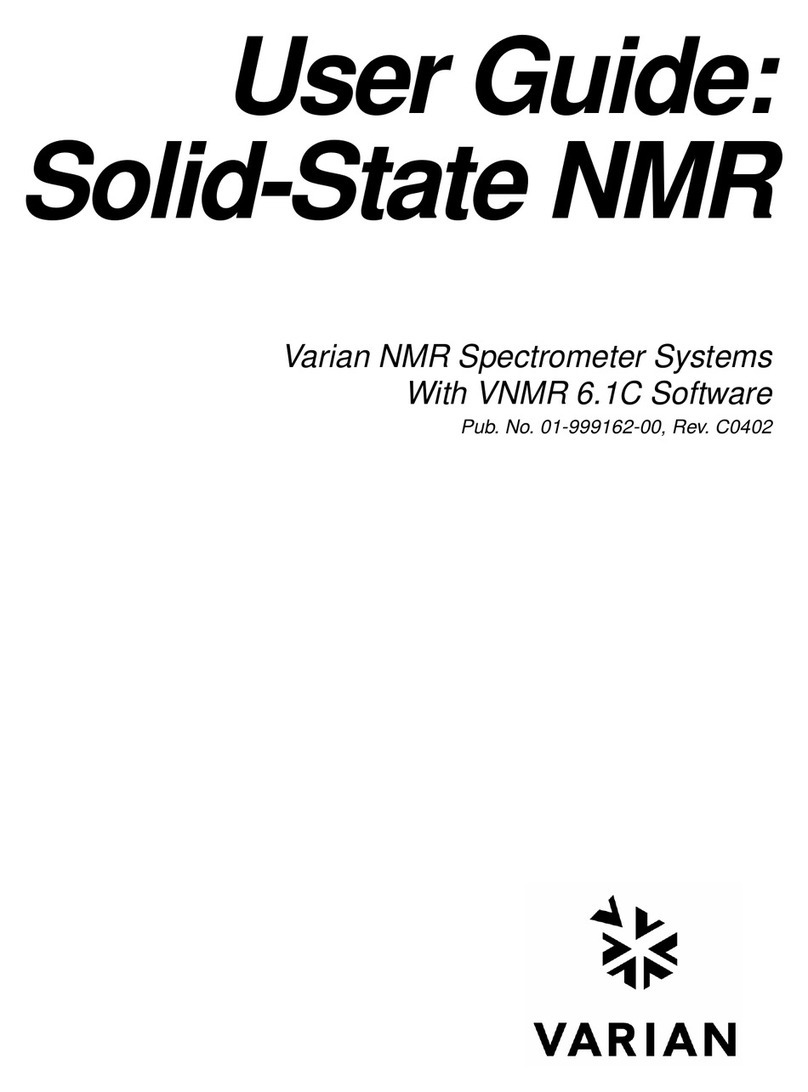
UNITY
INOVA
Solids Hardware Installation
UNITY
INOVA
NMR Spectrometer Systems
Pub. No. 01-999044-00, Rev. C0501
Applicability of manual:
Installation of the solids modules on Varian
UNITY
INOVA
NMR spectrometers:
Wideband NMR Module (Part No. 01-903007-00), Wideline Solids Module
(00-990488-0x), CP/MAS Solids Module (Part Nos. 00-990402-04, 00-990403-04,
00-990404-04), CRAMPS/Multipulse Solids Module (Part No. 00-990487-0x)
Revision history:
A0896 – Initial release as Pub. No. 87-195482-00
A0297 – Updated for VNMR 5.3
A0398 – Initial release as Pub. No. 01-999044-00
B1200 – Pneumatics/Tachometer Box, Rotor Speed Controller Upgrade Kit (Part No.
01-903862-00) for manual the Pneumatics/Tachometer Box, Rotor Synchronization
(Part No. 01-903729-00), and Rotor Speed Control (Part No. 01-903732-00) installation
and test procedures moved to
Pneumatic/Tachometer Box Installation
manual (01-
999179-00 Rev A1200).
C0501 – Moved low-temperature VT chapter to 01-999109-00, ECO 9135
Technical contributors: Frits Vosman, Dave Rice, Laima Baltusis, Ron Haner
Technical writers: Dan Steele, Everett Schreiber
Technical editor: Dan Steele
Copyright
2001 by Varian, Inc.
3120 Hansen Way, PaloAlto, California 94304
http://www.varianinc.com
All rights reserved. Printed in the United States.
The information in this document has been carefully checked and is believed to be
entirely reliable. However, no responsibility is assumed for inaccuracies. Statements in
this document are not intended to create any warranty, expressed or implied.
Specifications and performance characteristics of the software described in this manual
may be changed at any time without notice.Varian reserves the right to make changes in
any products herein to improve reliability, function, or design. Varian does not assume
any liability arising out of the application or use of any product or circuit described
herein; neither does it convey any license under its patent rights nor the rights of others.
Inclusion in this document does not imply that any particular feature is standard on the
instrument.
UNITY
INOVA
,
M
ERCURY
, Gemini,
GEMINI 2000
, UNITY
plu
s, UNITY,VXR, XL,VNMR,
VnmrS, VnmrX, VnmrI, VnmrV, VnmrSGI, MAGICAL II, AutoLock, AutoShim,
AutoPhase, limNET, ASM, and SMS are registered trademarks or trademarks ofVarian,
Inc. Sun, Solaris, CDE, Suninstall, Ultra, SPARC, SPARCstation, SunCD, and NFS are
registered trademarks or trademarks of Sun Microsystems, Inc. and SPARC
International. Oxford is a registered trademark of Oxford Instruments LTD. Ethernet is
a registered trademark of Xerox Corporation.VxWORKS and VxWORKS POWERED
are registered trademarks of WindRiver Inc. Other product names in this document are
registered trademarks or trademarks of their respective holders.
